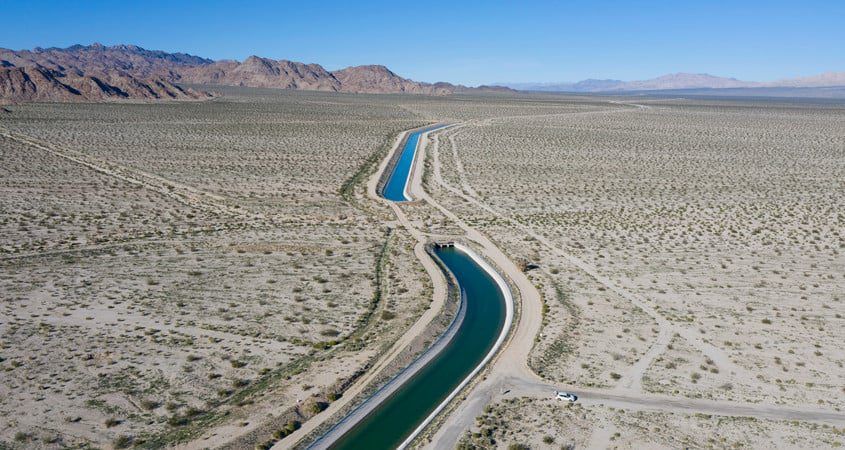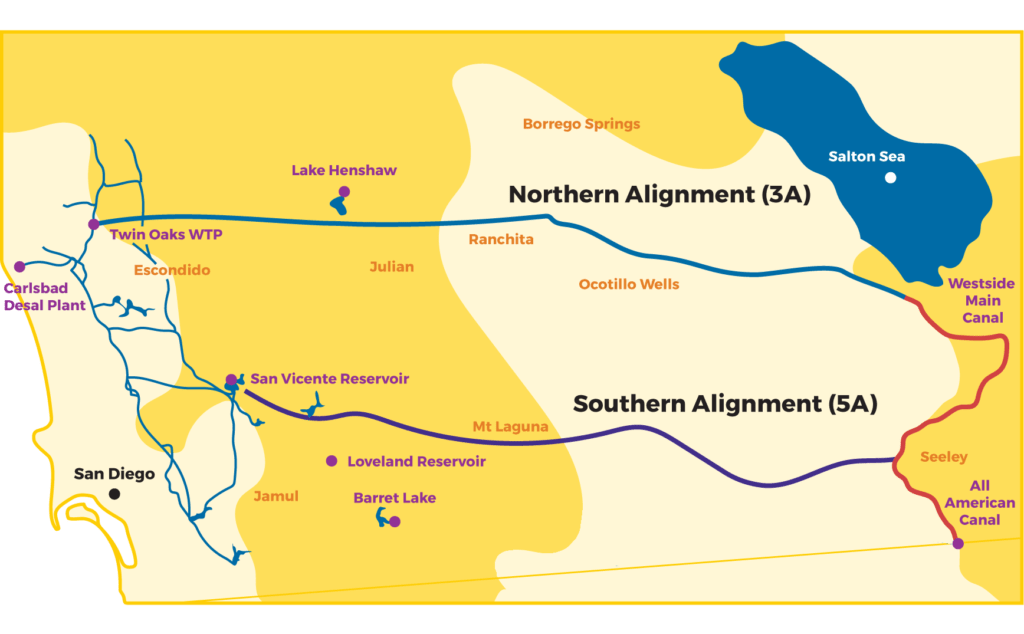Examining the Opposition to the Regional Conveyance System Pipeline
Share

Overview of the Regional Conveyance System (RCS)
The San Diego County Water Authority is exploring the possibility of a pipeline project known as the Regional Conveyance System (RCS). The proposed pipeline would extend approximately 130 miles from the Imperial Valley to San Marcos. The aim is to transport water from the Colorado River to the San Diego region. The project has an estimated cost of $6 billion.
Financial Concerns
According to an independent report commissioned by 18 of the 24 member agencies at the Water Authority, the project is deemed “substantially more costly than other options.” The report also criticizes the economic analysis supporting the RCS, stating it is “insufficient to support informed decision-making.”
No Additional Water Supply
One significant point of contention is that the RCS would not add any new water to San Diego’s existing supply. It is designed to give San Diego more control over its water transportation, thereby bypassing the Los Angeles-based Metropolitan Water District with which it has a contentious relationship.
Multi-Generational Impact on Water Rates
The RCS is projected to increase water rates for at least three generations, which poses an affordability issue, particularly for low-income families in the region.
Environmental Implications
The proposed route would require tunneling through mountain ranges and passing through protected areas such as the Anza-Borrego Desert State Park and the Cleveland National Forest. It is also noted to cross at least six active fault lines, making it vulnerable to seismic activity.
Energy Demands and Emissions
The pipeline would require significant energy to pump water over mountain ranges and possibly desalinate it. According to estimates, this would increase the region’s energy demands by at least 40 percent, contributing to higher greenhouse gas emissions.
Alternatives to the Pipeline
Critics argue that instead of investing in this pipeline, the region could focus on more cost-effective and sustainable local water supply alternatives. These could include wastewater recycling, stormwater capture, green infrastructure, and water efficiency technology.
Widespread Opposition
Majority of the Water Authority’s member agencies, the City of San Diego’s Public Utilities Department, and more than half of the Water Authority’s board members are opposed to the project. Environmental groups are also voicing concerns, stating that the environmental impact could render the project un-permittable.
Current Status
Despite the opposition and concerns, the San Diego County Water Authority continues to move the project forward. The next 15 to 18 months will be spent on undertaking Phase B of the Regional Conveyance System Study.
Summary
The proposed Regional Conveyance System has generated substantial opposition due to its financial, environmental, and energy implications. While the project aims to give San Diego more control over its water supply, the lack of new water added, the cost, and the potential environmental impact are significant points of contention.

Overview of Proposed Conveyance Routes
Potential Conveyance Routes and Their Connections
Each of the proposed conveyance routes for the Regional Conveyance System (RCS) would link to the All-American Canal at its intersection with the Westside Main Canal in the southwest corner of Imperial Valley. There are three main routes under consideration:
- Two southern routes would extend between the Imperial Valley and San Diego. One of these would go over the mountains, running parallel to the U.S./Mexico border, while the other would tunnel through the mountains. Both these routes would terminate at the San Vicente Reservoir in Lakeside.
- The third, and northernmost, route would proceed alongside the Westside Main Canal toward the Salton Sea, pass by Borrego Springs, and traverse through the mountains. This route would connect to the Water Authority’s Twin Oaks Valley Water Treatment Plant in San Marcos.
Key Findings from the Draft Report
- The region is projected to rely on Quantification Settlement Agreement (QSA) water until the year 2112.
- All three RCS route alternatives have been deemed technically and engineering-wise viable.
- Of the alternatives, 3A and 5A are considered economically competitive and offer long-term water reliability at a low cost to the region. In contrast, Alternative 5C is not deemed economically competitive compared to 3A and 5A, and it will not be recommended for further study.
- Alternatives 3A and 5A could be implemented without major disruptions to existing Water Authority operations.
- The potential for multi-agency, multi-use partnerships and other agreements could notably reduce the overall cost and increase the value of each RCS alternative. These partnerships could provide regional benefits not just to San Diego, but also to California and the Southwest as a whole.
For those interested in reading the full report, it is accessible on the San Diego County Water Authority website.









